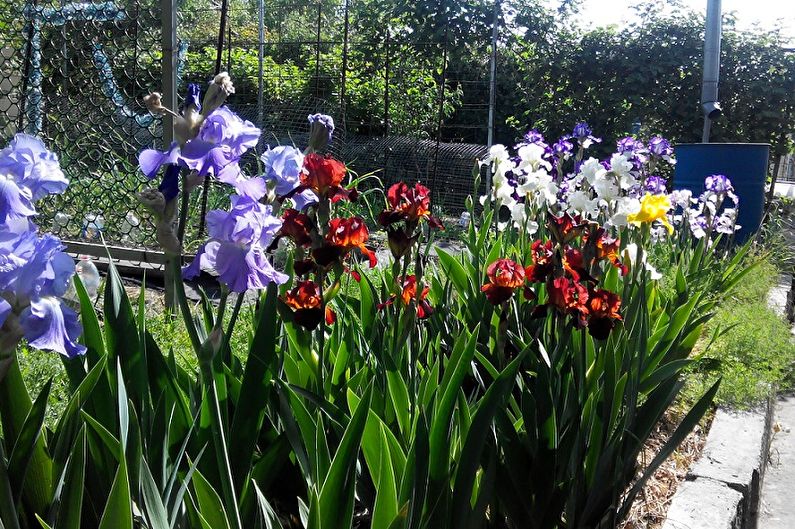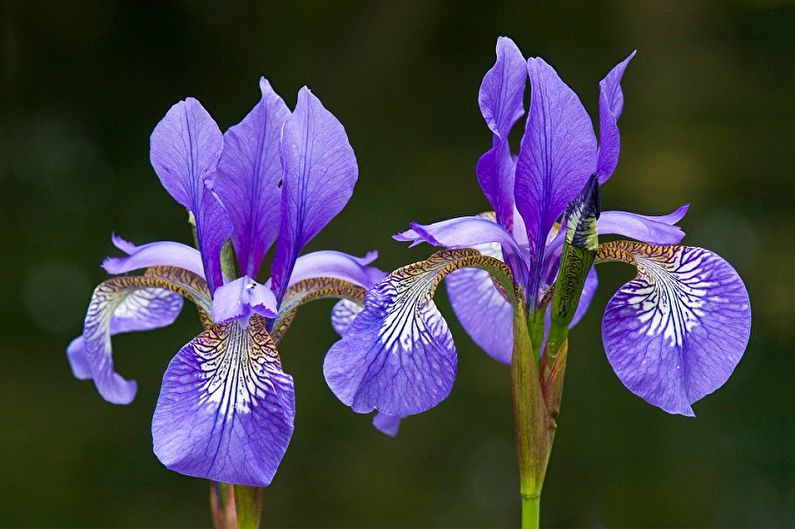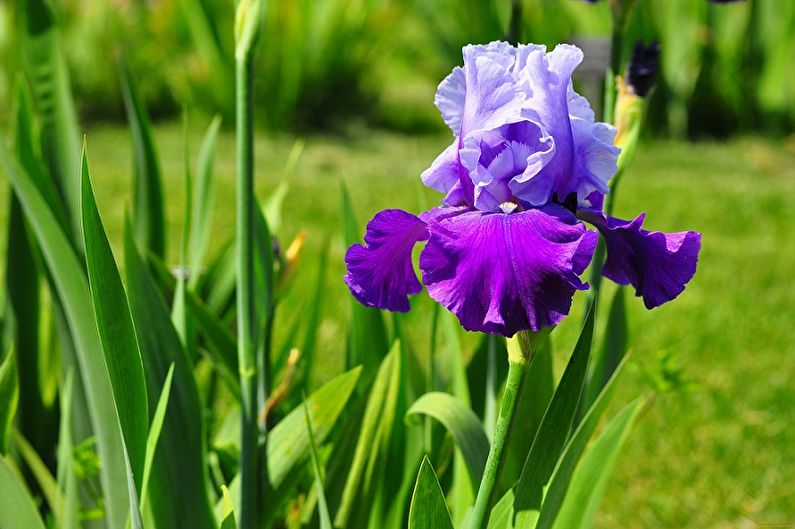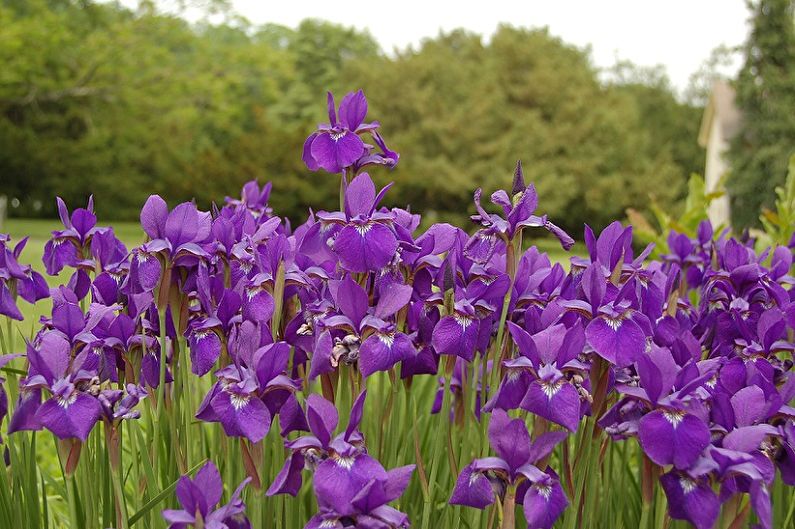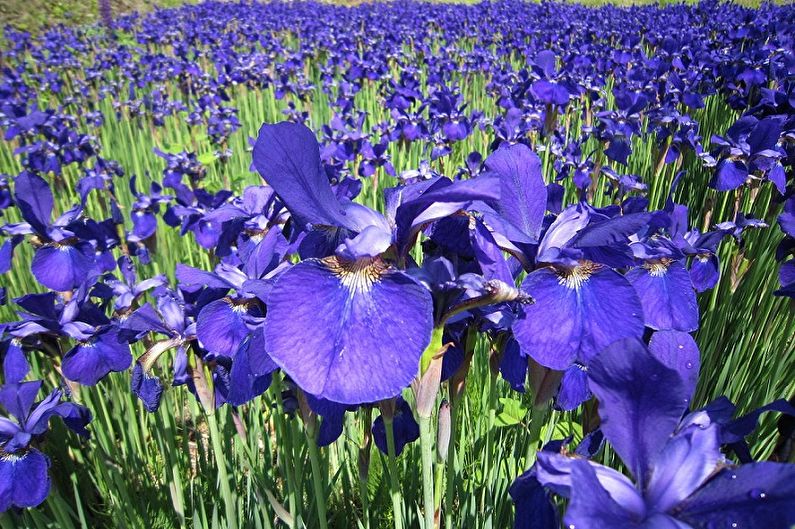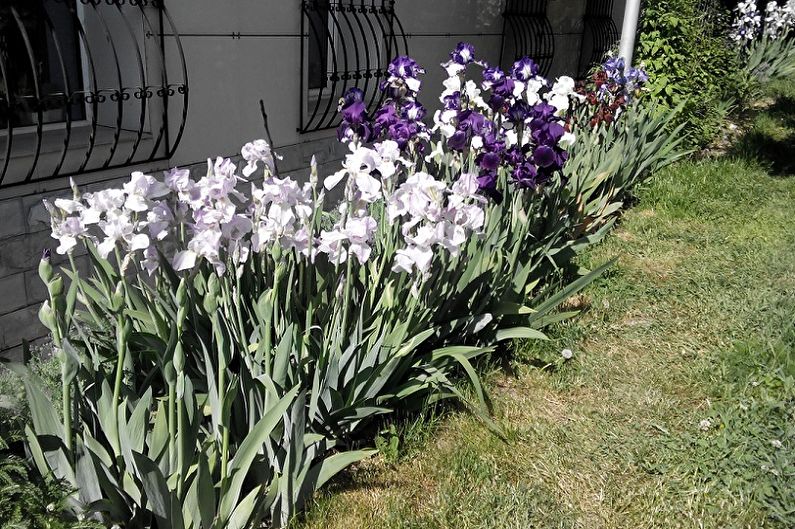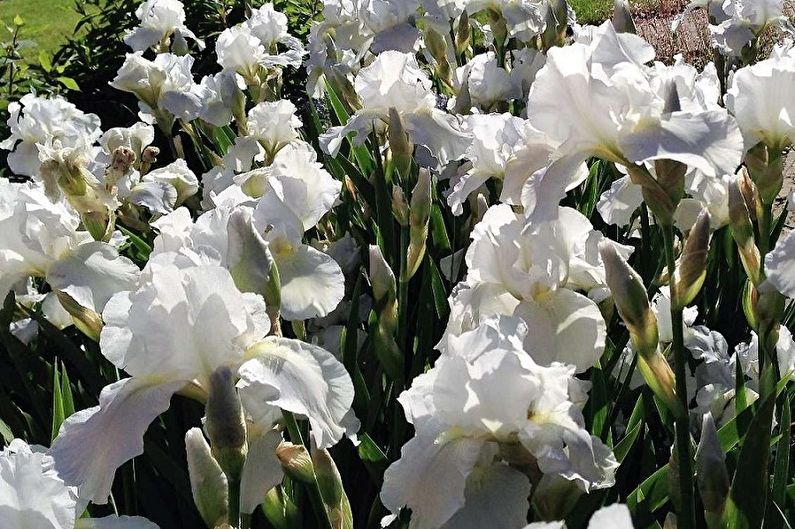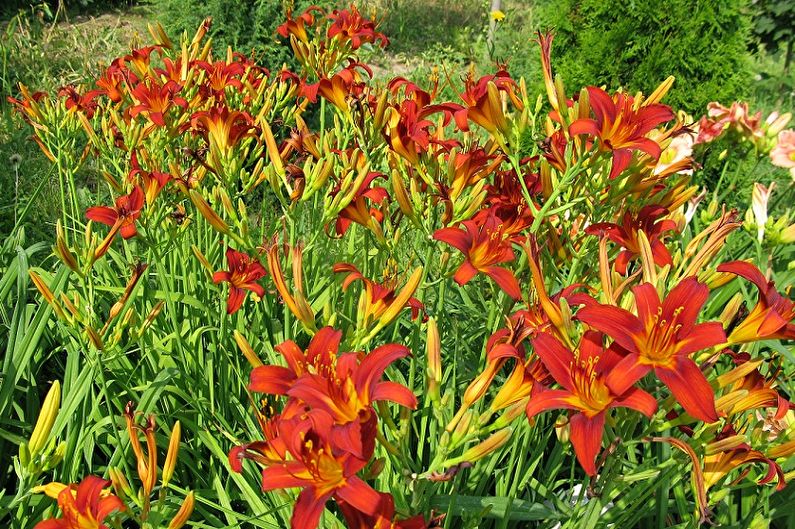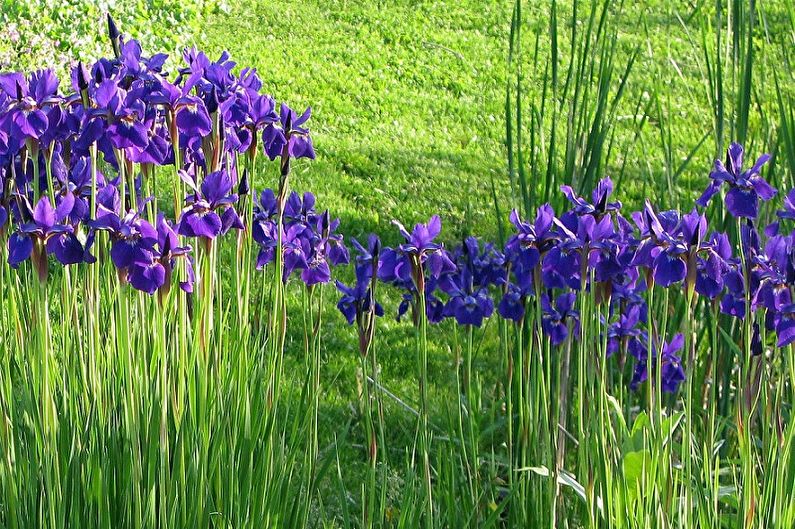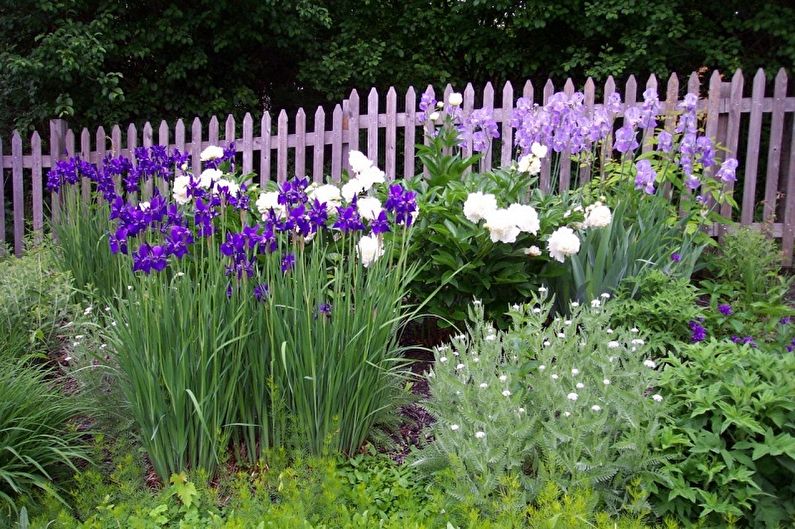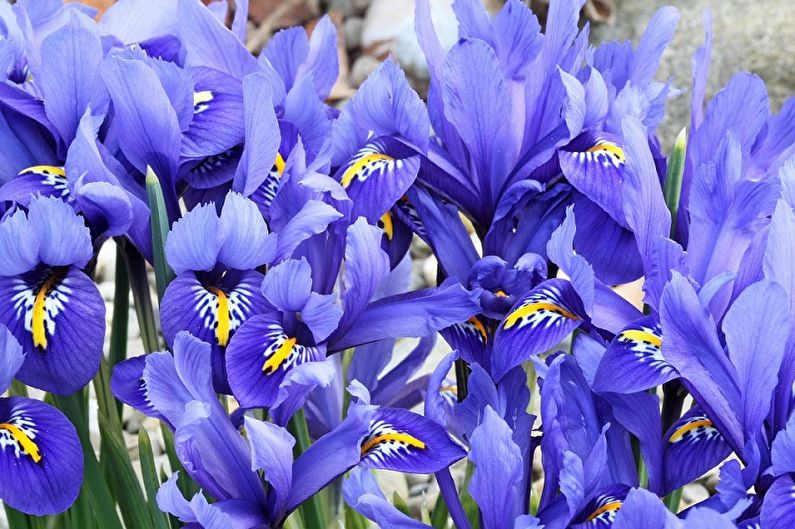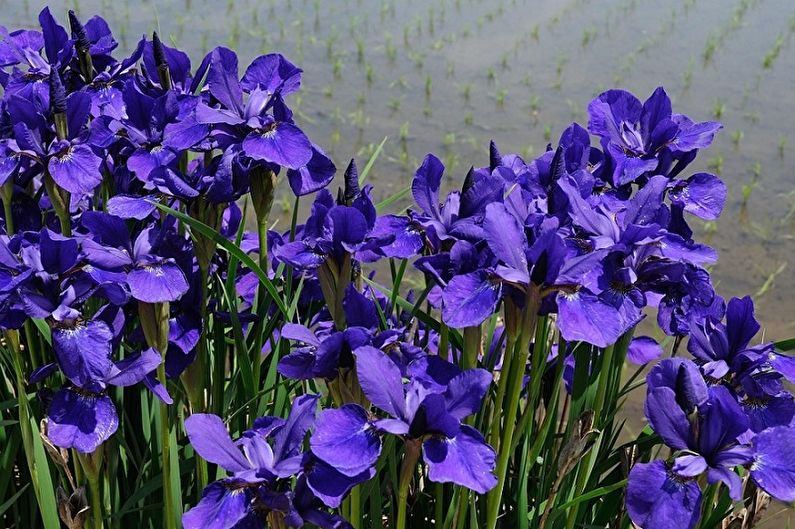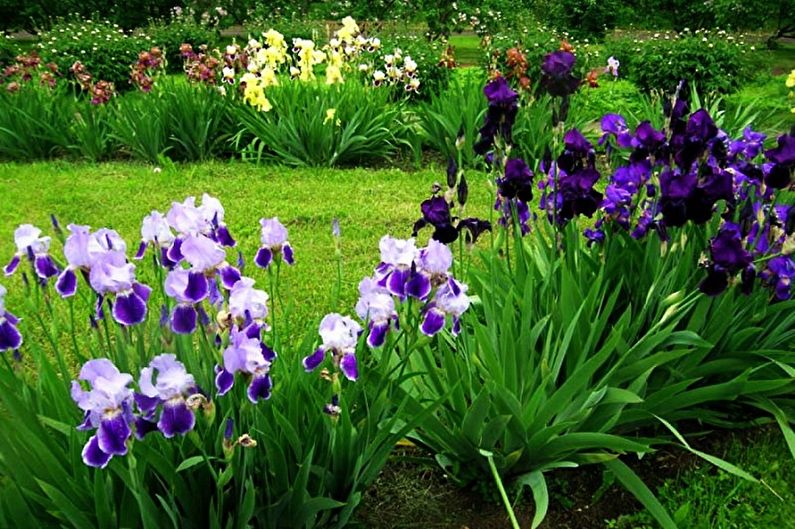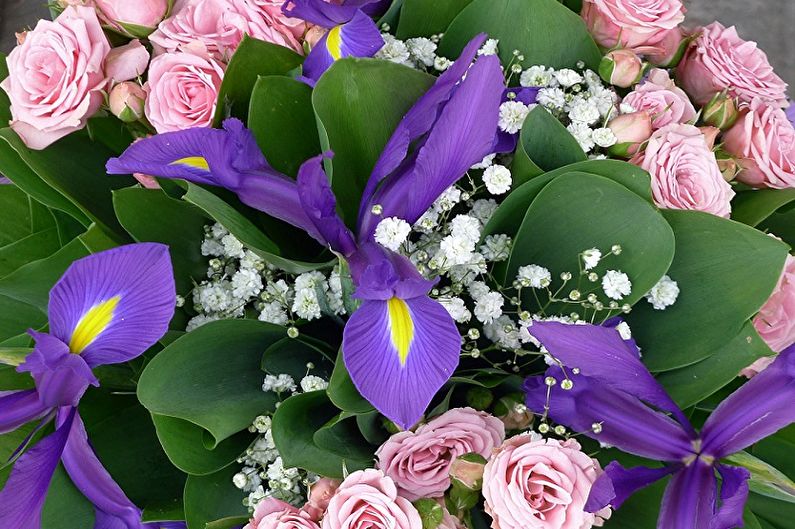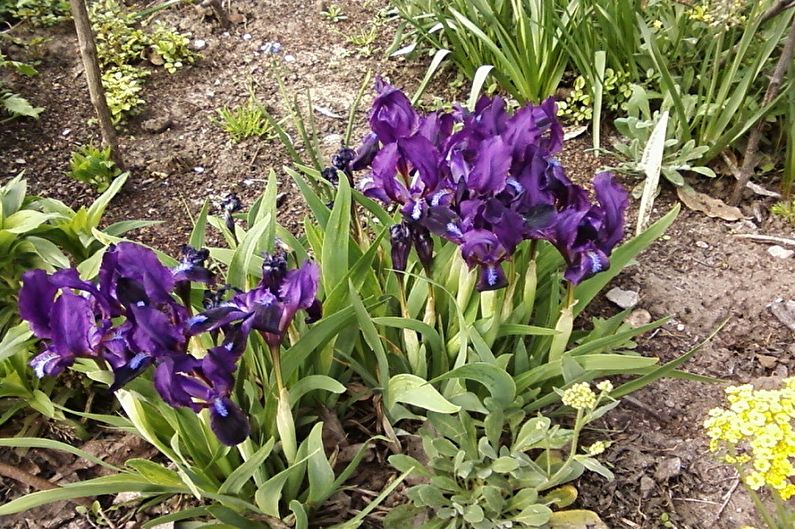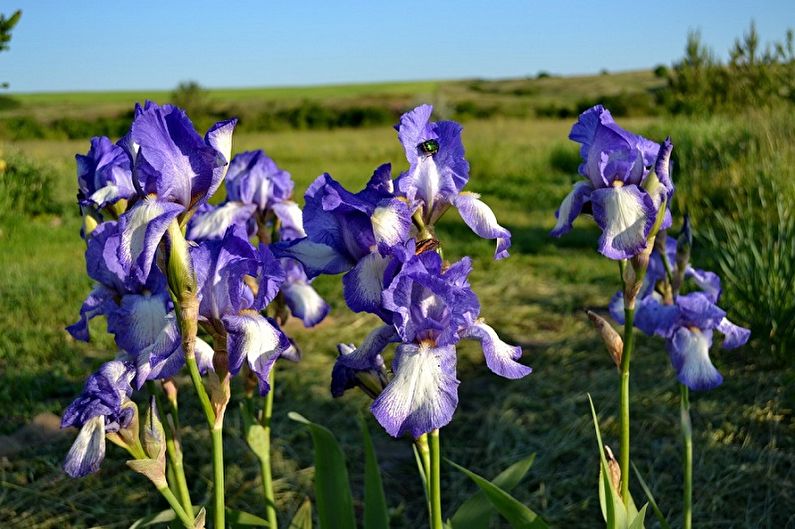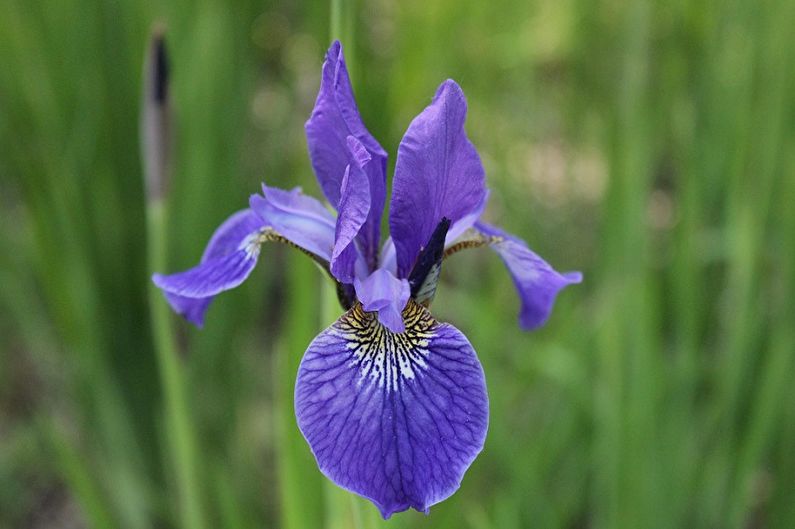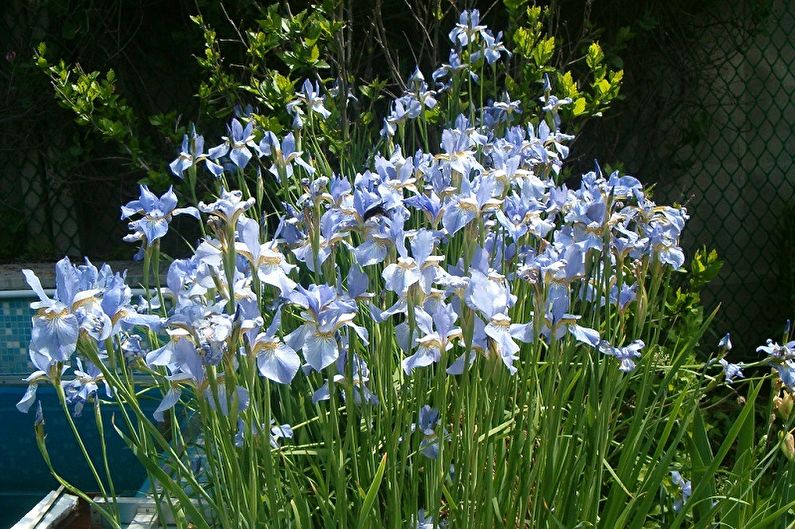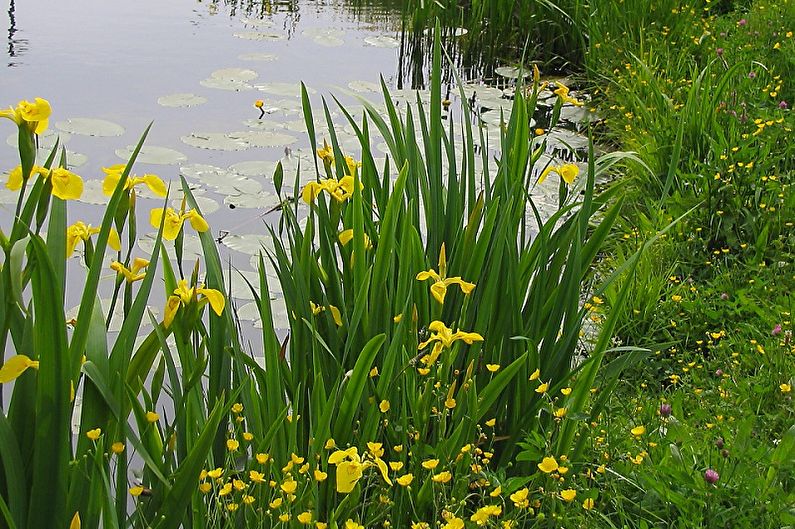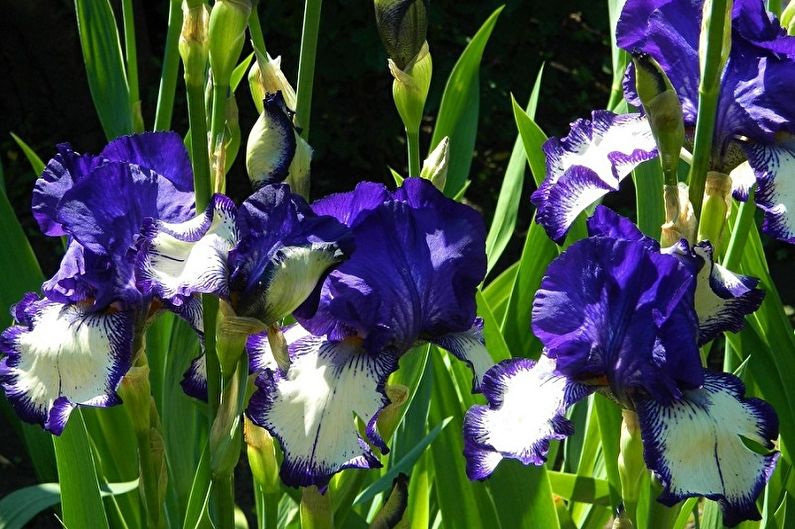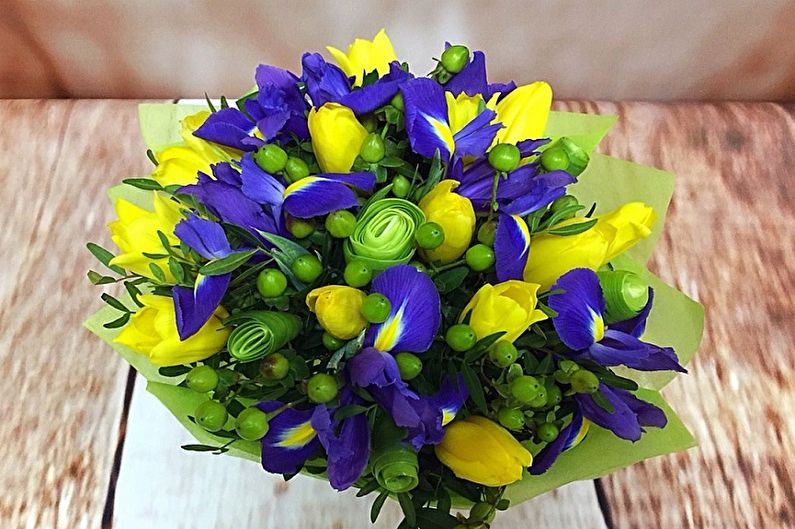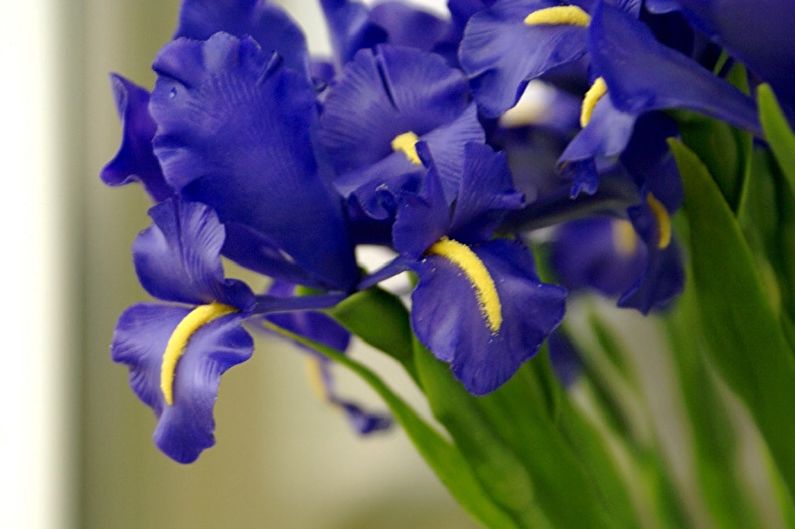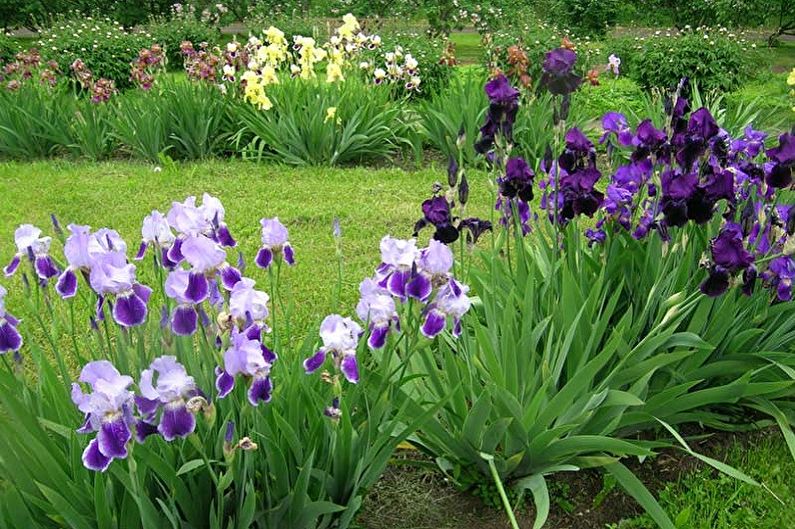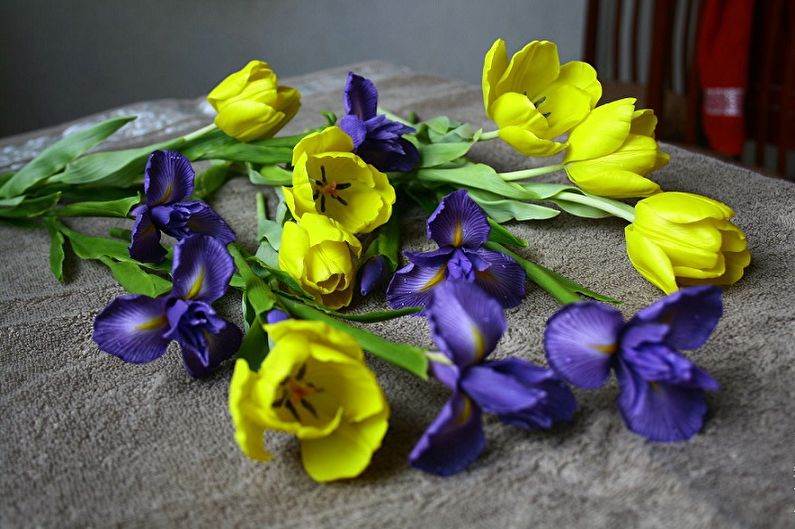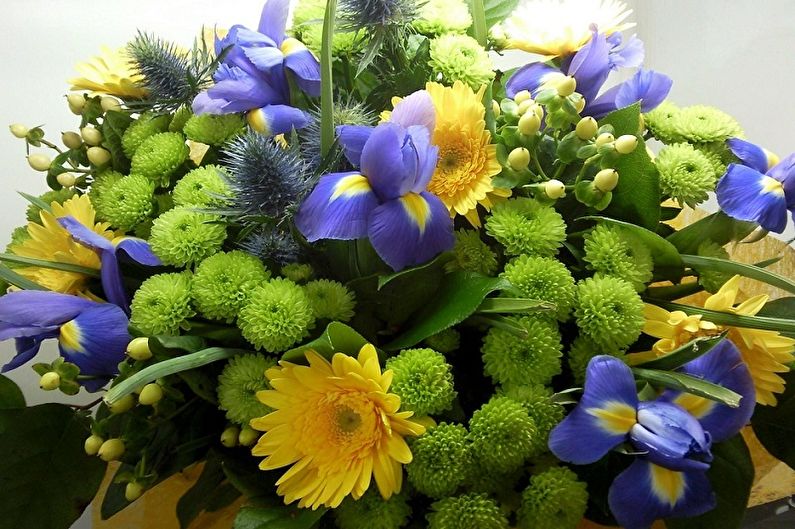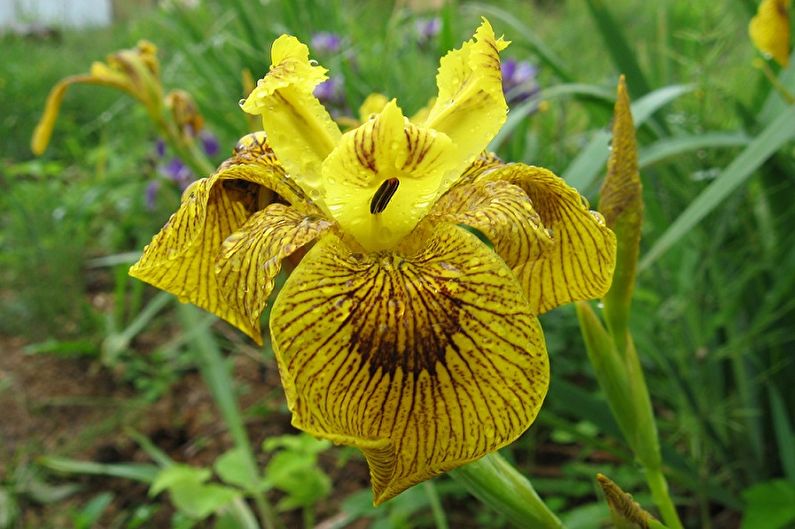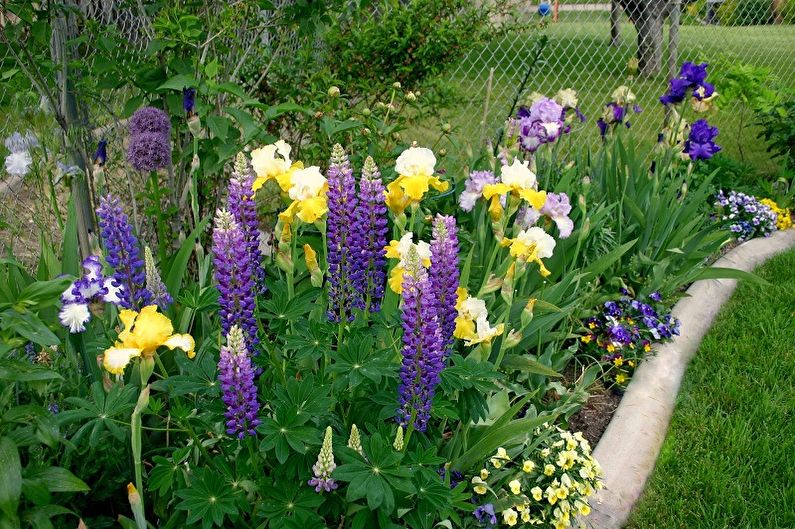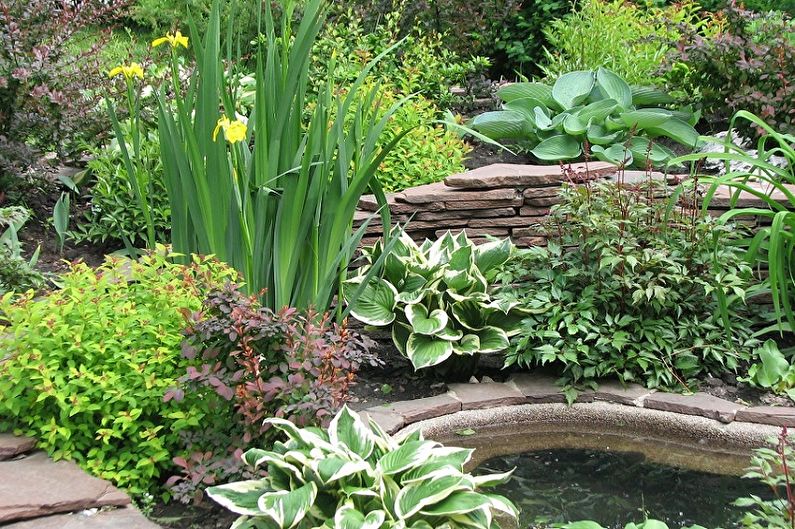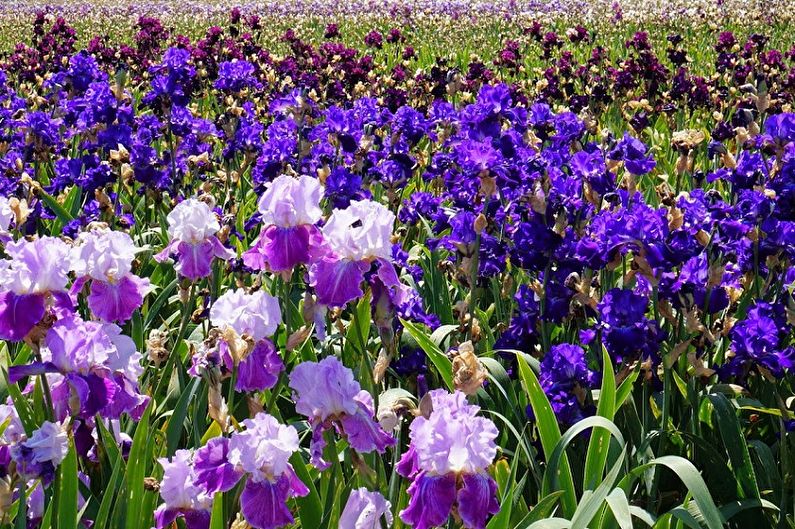
Irises are spread all over the world and have been known to mankind since ancient times. Having received recognition in different countries, they gained many new names: roosters, killer whales, etc. It is believed that flowers are endowed with magical powers, are symbols of trust, are called the ancient Greek goddess Irida. Plants have amazing decorative qualities, having a diverse color, which includes the entire palette of the rainbow. They are frequent residents of household plots and houses. How to grow and how to care for irises will be discussed in this article!
The main types
The genus of the plant is very numerous and includes about 700 species. Accordingly, their classification is quite complex, multi-level. Irises vary in size, color, shape, and other characteristics. However, for self-cultivation, the main two groups of flowers are used - bearded and non-bearded, which, in turn, have many varieties.
Bearded Irises
This group is so named because there are tiny hairs on the petals of the buds. It includes many types and varieties of different sizes, colors and shapes, such as:
- “Baltic Sea” - flowers of a pleasant blue color are distinguished by wavy petals and an original pattern of saturated blue grooves;
- “Bewilderbest” - has a beautiful white or yellowish color, and the petals are literally mottled with purple streaks;
- “Acoma” - has an inflorescence of cream tone (ivory) with petals edged with lavender border.
Bearded irises look great in bouquets, dazzling with their colors and shapes. In order for the garden plot to be filled with the beauty of their flowering for a long time, you can choose varieties for planting that differ in the period of bud blooming.
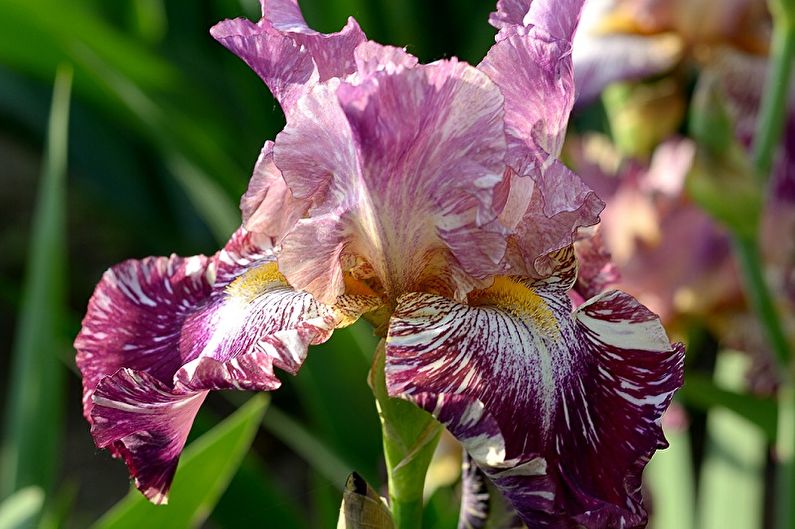
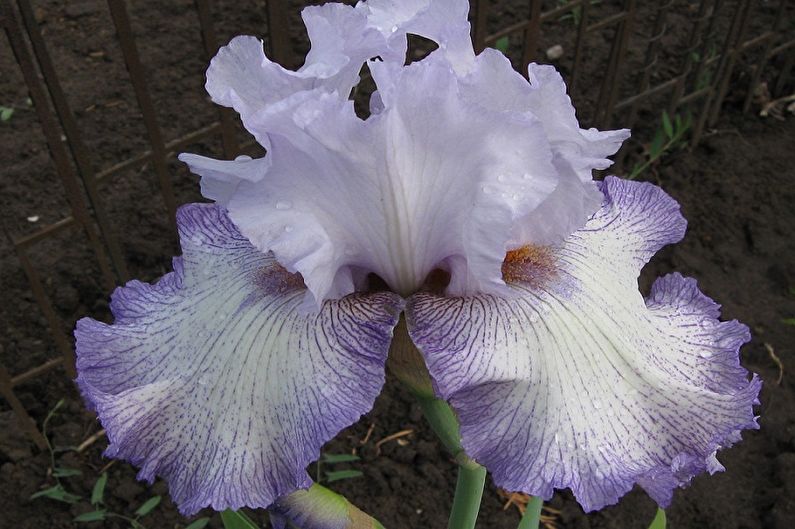
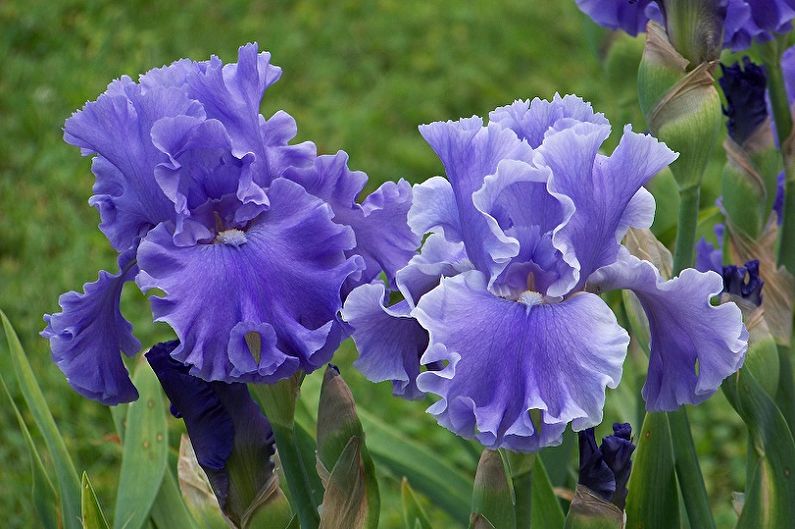
Non-bearded irises
The group of beardless includes much more varieties of irises, which are divided into groups. Three of the most popular are distinguished from them, such as:
- Siberian - under good conditions grow up to 80 cm, have flowers with a diameter of about 10 cm with a wide range of colors from light blue to dark purple. Feature is the lack of smell;
- Japanese - they are also called "xiphoid", they have lush buds, which in the open state reach 25 cm in diameter. The color palette is replete with variety. For example, the variety “Nessa-No-Mai” - white flowers with black veins, “Solveig” stands out in purple tones, and the variety “Spuria” includes irises of a wide variety of colors: lemon, dark purple, blue and others;
- Swamp - differ in their soil requirements, preferring high humidity, have a rich yellow or lemon color. This view is ideal for decorating artificial garden lakes. Such varieties as the Golden Queen, Umkirch, etc., won great sympathy.
These irises are characterized by refined sophistication, captivating the look of an ordinary layman. Their requirements for environmental conditions are fully consistent with our climate, so care for these varieties is greatly facilitated.
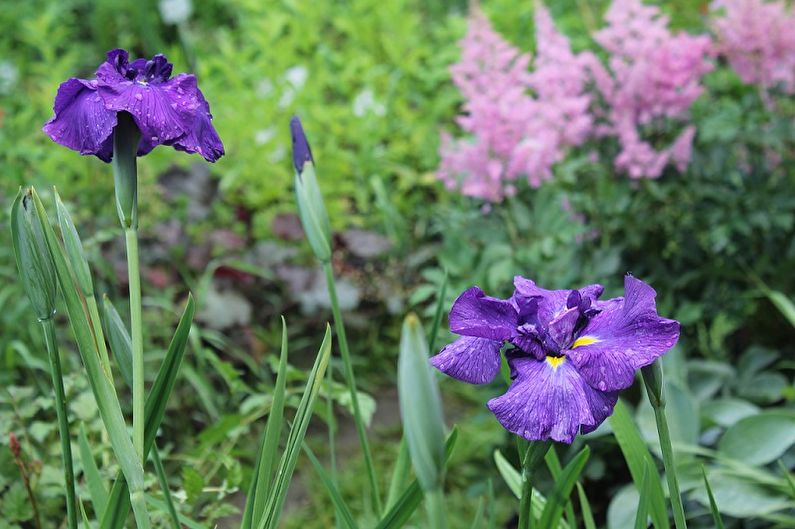
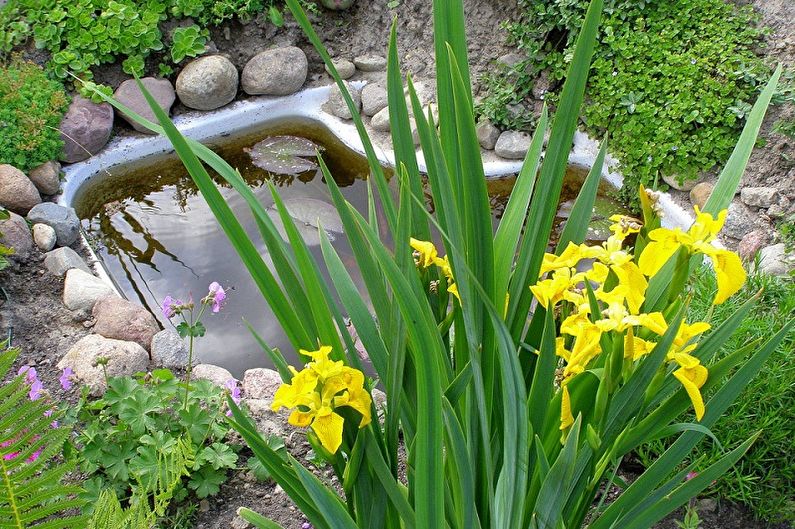
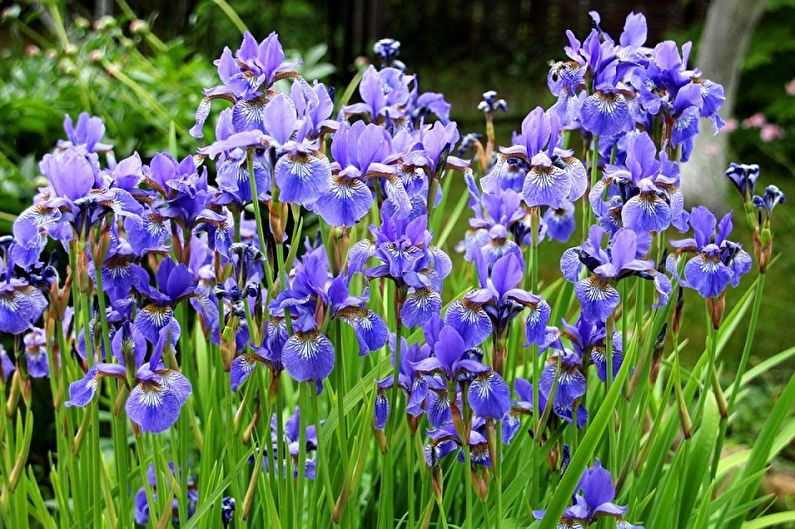
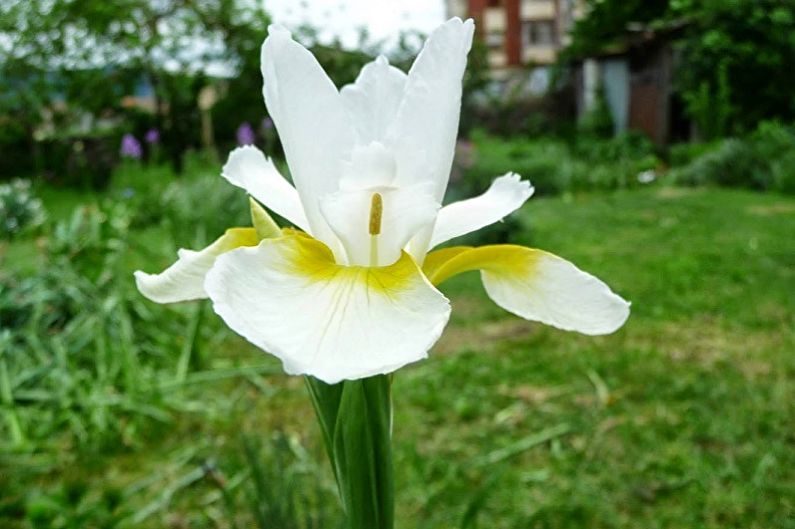
Proper iris care
Variegated and elegant irises will certainly delight with their unique flowering only if they are provided with proper conditions. This applies to timely weeding, feeding, compliance with suitable microclimatic conditions.
Lighting
Moderate lighting will be needed for irises during the growth period, at home, additional sprouts are equipped with young sprouts. The greatest amount of light must be provided during flowering.Irises are afraid of direct sunlight, which can cause leaf burns, so even when planting in the ground, you need to choose a site where the surrounding plants will create a partial shade culture.
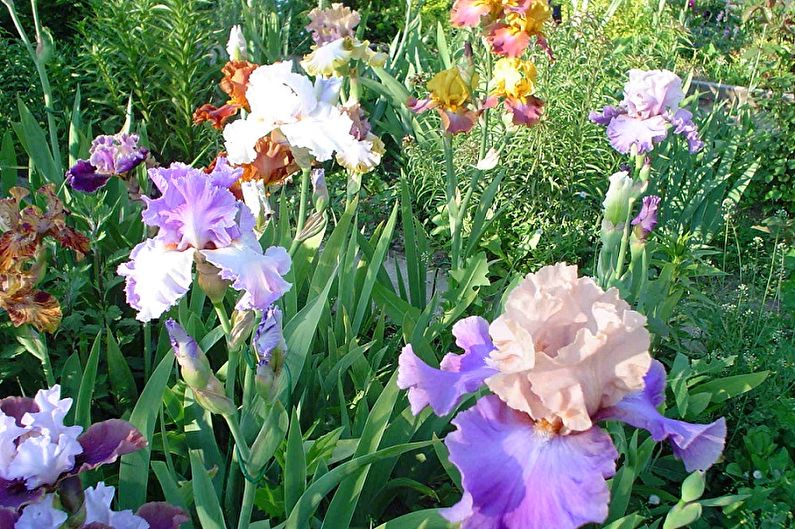
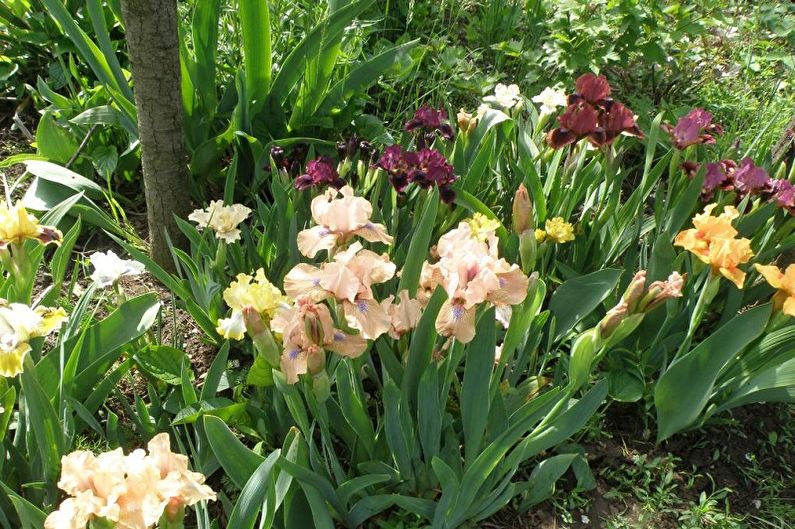
Temperature
Irises do not like heat. The plants feel more comfortable at + 20 ... + 25C. During flowering, a lower temperature regime is required - no more than + 16C.
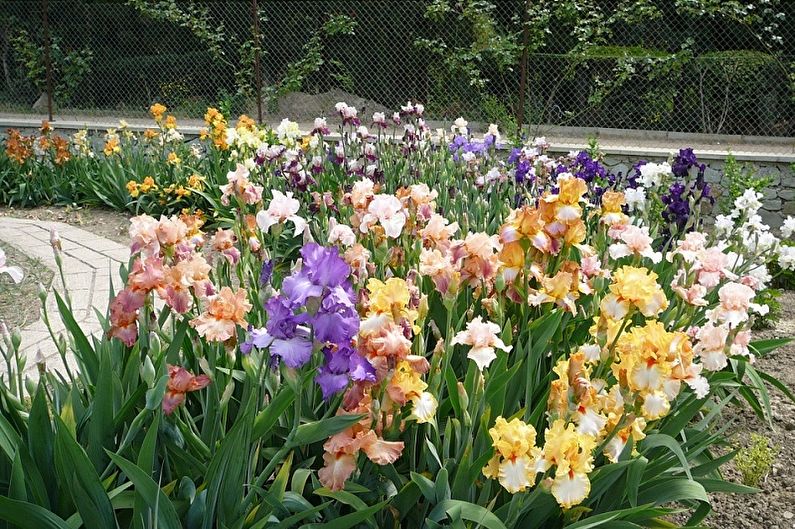
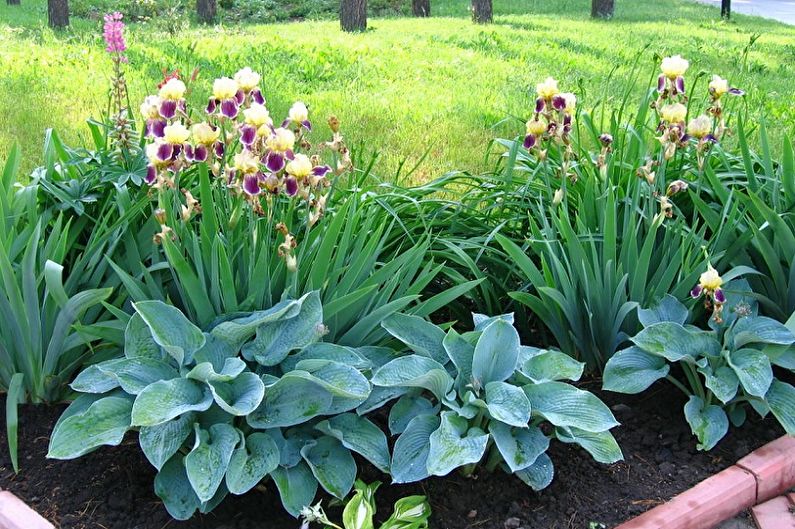
Humidity
For most species, low humidity conditions are preferred. Irises do not require additional spraying, even in dry times, regular watering is sufficient. Severe soil moisture can bring serious consequences, as a result of which the development of fungal diseases of the rhizome is possible.
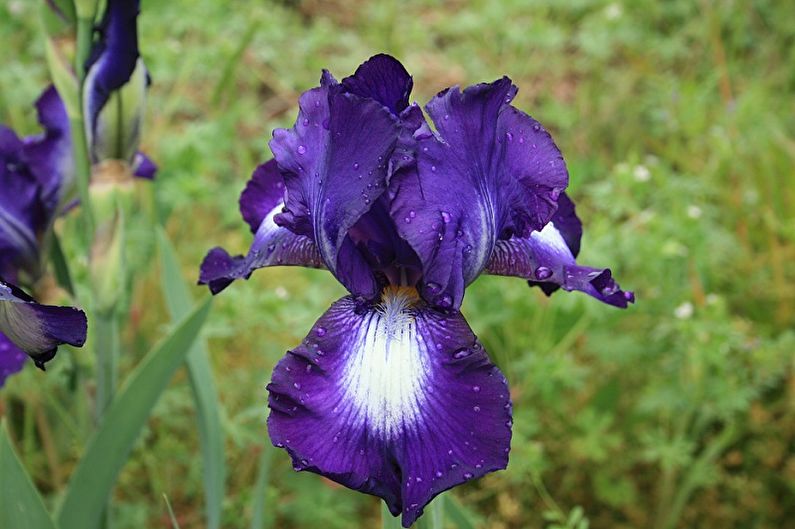
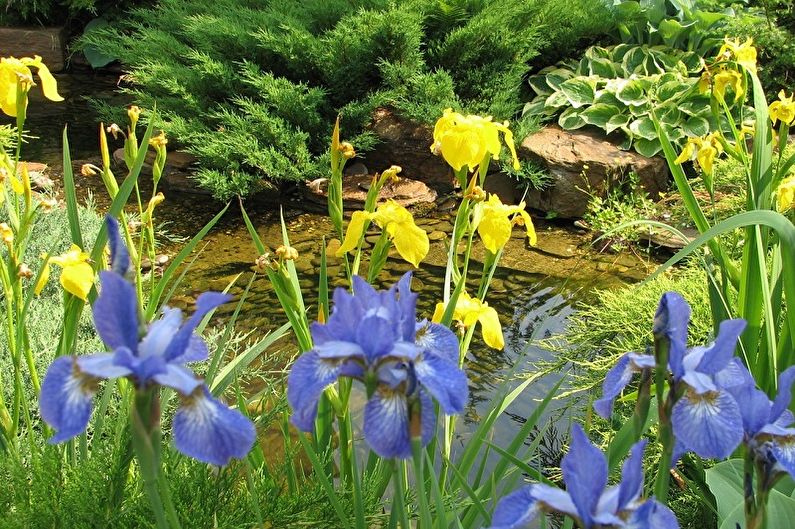
Watering
Irises are watered as necessary - when drying of the soil near the roots is observed. In dry weather, watering is carried out once a day, and with normal humidity, 2-3 procedures per week can be dispensed with. Particular attention should be paid to the plant, which is in the stage of budding - during this period, watering should be more adequate and regular.
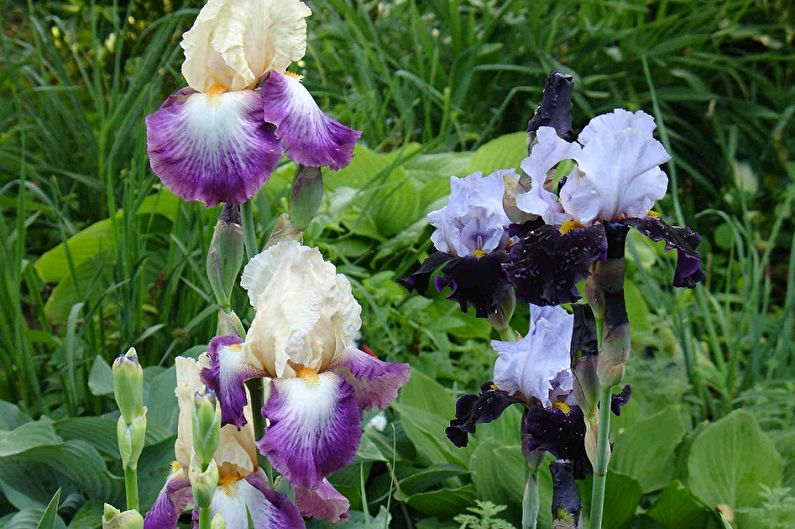
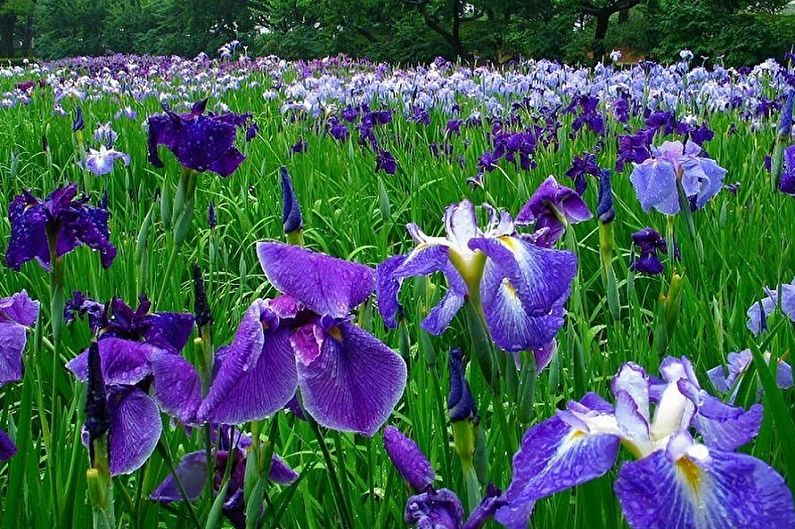
Fertilizers and fertilizing
The main set of fertilizers is applied to the soil during planting. As a rule, it includes organic components (humus, ash) and mineral fertilizing with a high nitrogen content. Top dressing is introduced into the soil, which must be loosened and dug up, preparing the site for planting. In most cases, this is sufficient. At the discretion of the owners, you can give the plant recharge during its growth with a solution of potassium-phosphorus fertilizers. It is categorically not recommended to feed irises during flowering, you can add fertilizing only when buds are formed, consisting of potassium, phosphorus and nitrogen in a ratio of 1: 1: 2. It is very important not to overfeed the dwarf species at home, as many offspring will appear, but you can not see the flowers.
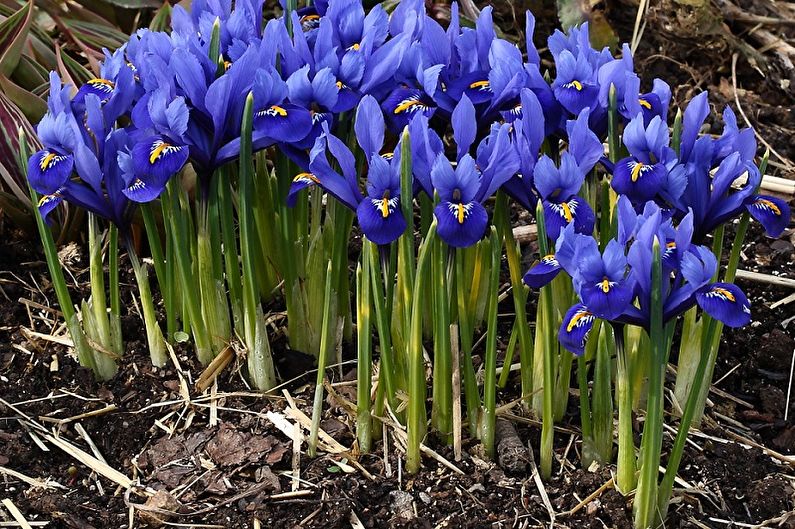
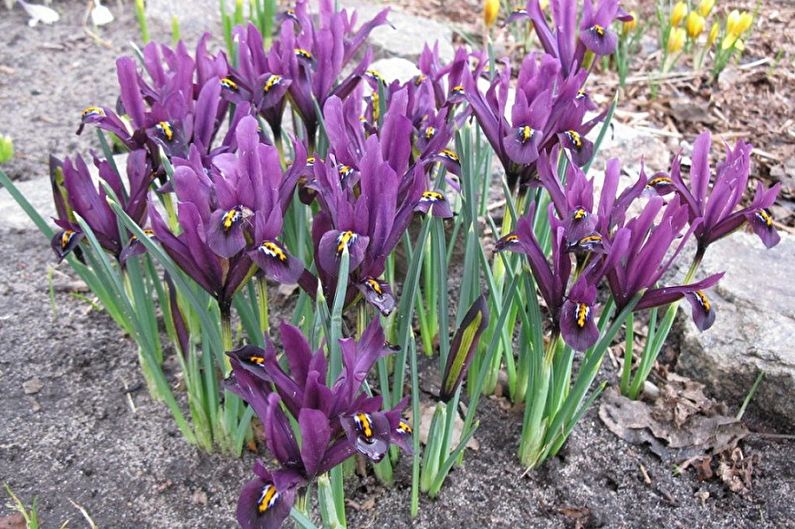
Diseases and Pests
Flowers are prone to various diseases, and varieties with variegated flowering are most located to them. Often ailments affect the plant due to improper care. One of the serious diseases can be called fusarium - a type of rot that can destroy a culture in a short time. If the infected iris is not removed from the garden in time, the disease will spread to neighboring flowers, which must be additionally treated with foundationazole, watering the root with it. To avoid all kinds of spotting irises, they need to be sprayed with a solution of Bordeaux liquid.
In addition to diseases, the plant can be attacked by pests, the most dangerous of which are scoops (eradicate the base of the peduncle), thrips (disrupt photosynthesis in the leaves), slugs (act as carriers of infections). You can get rid of scoops and thrips by treating the plant with korbophos. For slugs, traps are made of wet rags or burdock leaves, laying them out around the site. When the slugs that use the material as shelter slide into it, traps must be collected and burned.
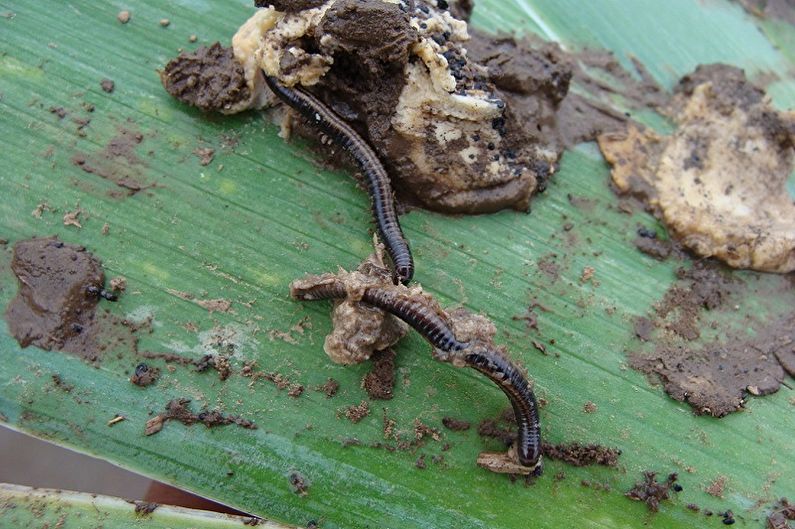
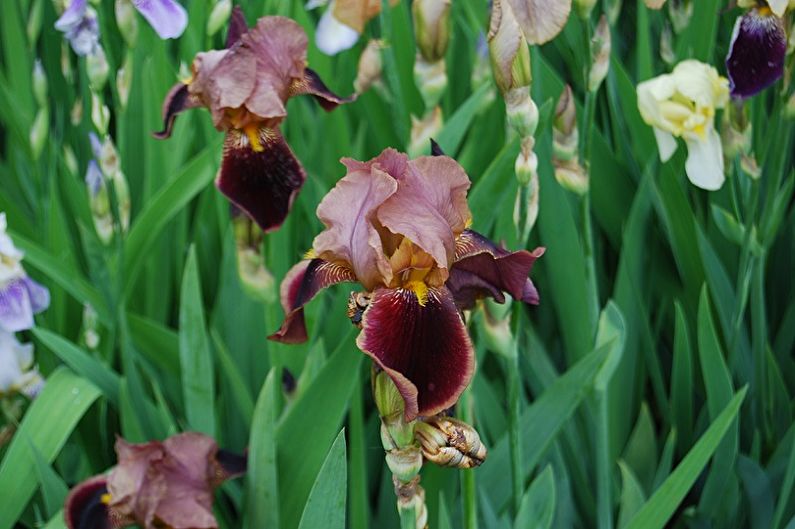
How to transplant irises
You can transplant the culture at any time of the year. The most favorable period is a few weeks after flowering is complete. The site is selected individually for different groups, for example, swamp irises feel more comfortable in the lowlands where moisture accumulates, and they choose a sunny place for the bearded. When planting in groups, it is important to observe the distance between plants - for high varieties the distance should be at least 40 cm, and for dwarf plants - about 15 cm.
Having decided on the future place of "residence" of irises, it is necessary to fertilize it, dig a hole and make a small mound of soil in it. The bush sits in a hole so that the roots are straightened around the embankment. Then it must be sprinkled with soil, compacted and watered, after which normal care is followed.
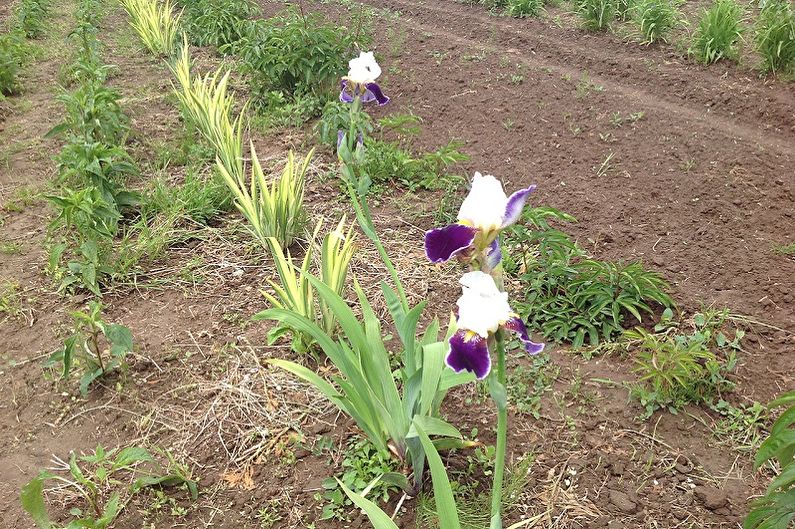
Propagation at home
There are several ways to breed iris.The most common, simple and reliable division of the bush is recognized, although you can also use the division of the buds or plant seeds for seedlings.
Propagation of iris seeds
Seeds can be sown in September using freshly harvested material. However, there is a risk that the cooling will be delayed, and sprouts will have time to rise, which will soon die. Therefore, the best time to plant irises is spring, namely, the month of March.
The material is preliminarily subjected to special treatment: the seeds are wrapped in a damp cloth, which is placed in a container with a lid and refrigerated for 1 month. After this period, it is necessary to prepare a new tank already with soil. Seeds are sown, sprinkled lightly, moisten the soil. The garden bed must be installed in a warm place, and as soon as the first sprouts appear, organize backlighting. Dive is made in May.
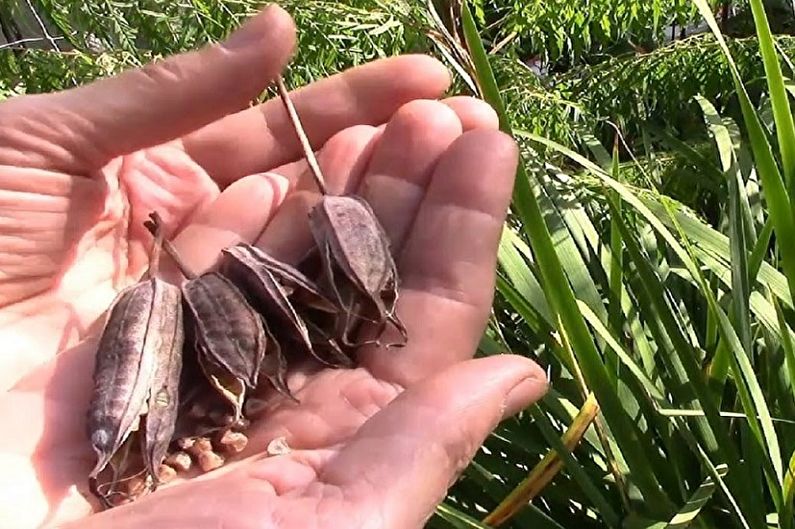

Reproduction of irises by the kidneys
If you carefully consider the clean root of the iris, you can find kidneys on each of its links. They can be carefully cut with a sharp knife along with pieces of rhizome. This process is carried out at the end of flowering. The prepared segments must be held for about half an hour in a solution of potassium permanganate, and then dried for two days. The resulting material is planted in pots or boxes with prepared soil and put in the darkened areas of greenhouses. When rooting is completed, irises can be transplanted to greenhouse beds, where they winter. It is recommended to transplant into open ground not earlier than in a year. Especially valuable collection varieties are propagated in this way.
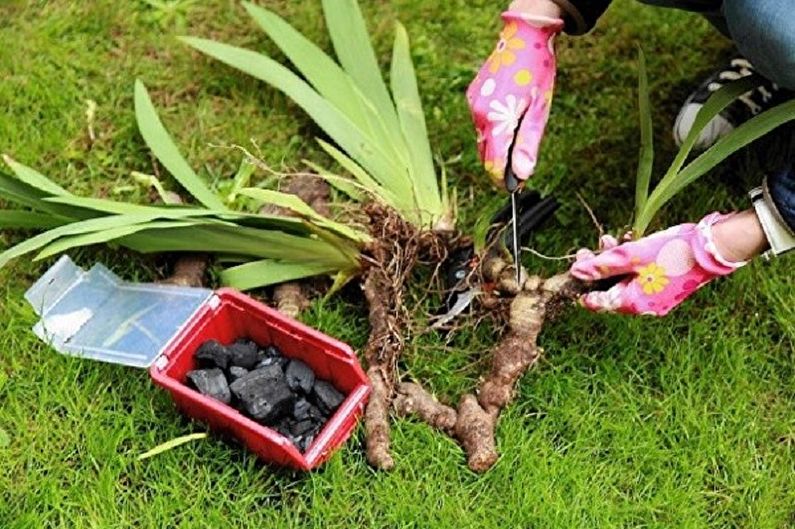
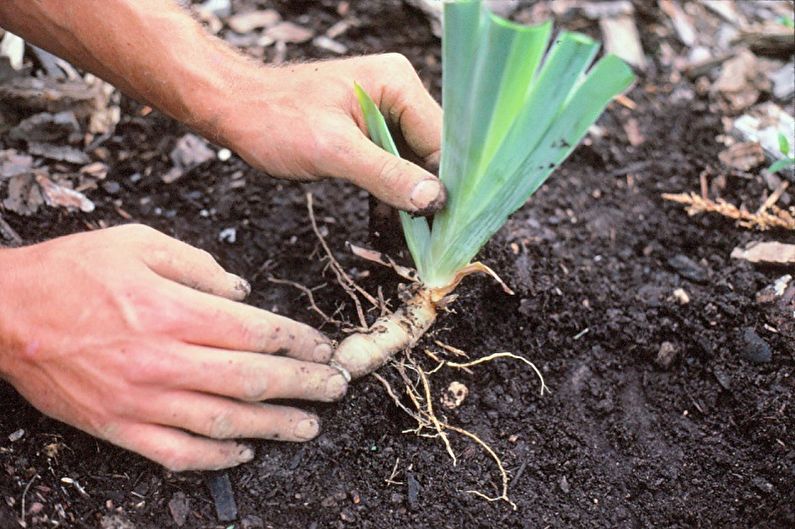
Reproduction of irises by division
An adult bush (4–5 years old) must be carefully dug up so as not to cause serious damage to the root system. Then it is cut into segments so that each of them has at least one fused link. The roots will need additional treatment before planting - they are dried, cut off dead roots and sprinkled with trimmed coal. Sometimes the dividend is cut out from the side, without digging up a whole bush. To avoid a possible disease of bacteriosis, it is better to hold the bushes for a couple of hours in a potassium permanganate solution before planting. Leaves and roots need to be shortened a little, leaving 10-12 cm of their length.
The resulting new planting material is planted on a pre-prepared, fertilized area. It will be necessary to carefully water the roots so that water does not fall on the leaves.
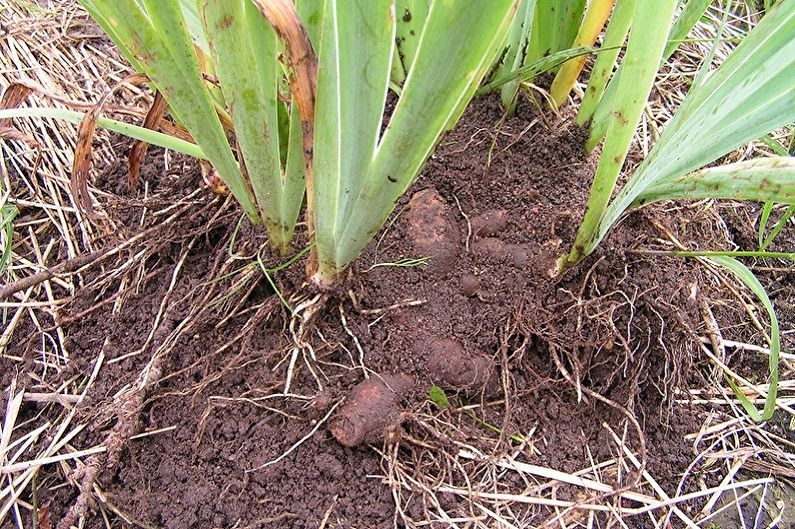
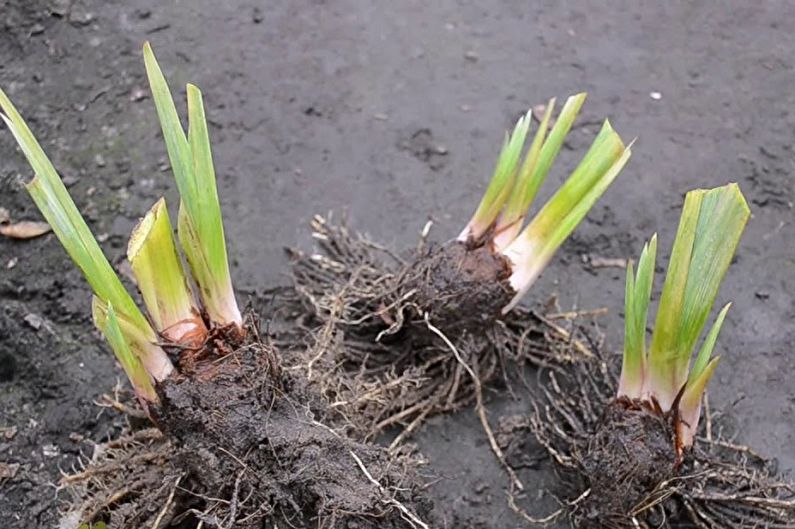
Irises - photo
Irises are so popular that they can be found almost everywhere - they decorate garden plots, make flower beds full of different colors, are an excellent material for decorating iridaria, as well as the main or complementary component of bouquet compositions. You can learn more about the beauty of blooming iris from pictures of the photo gallery. Enjoy watching!
